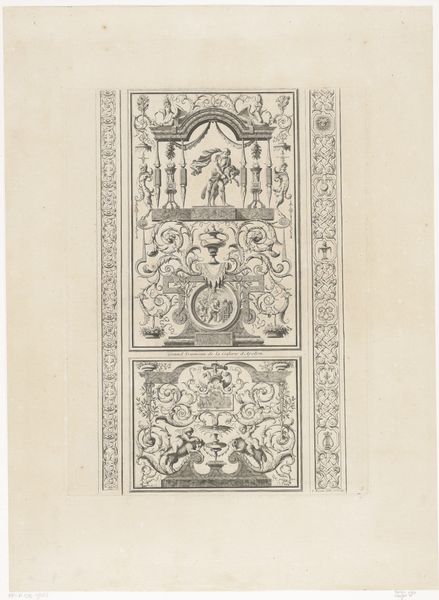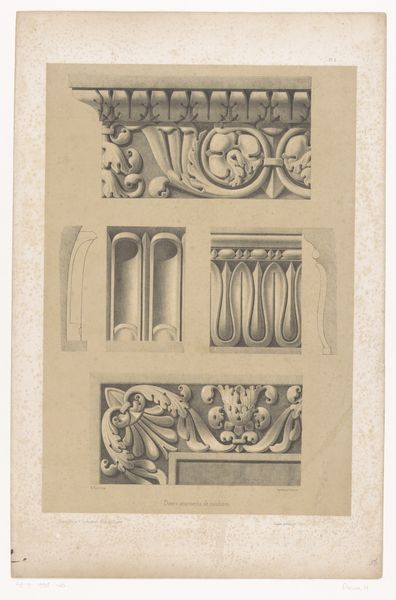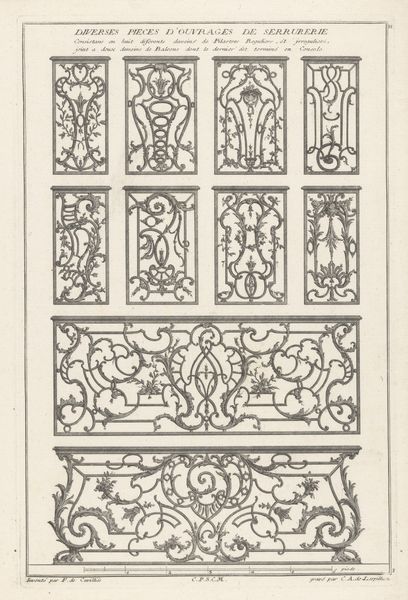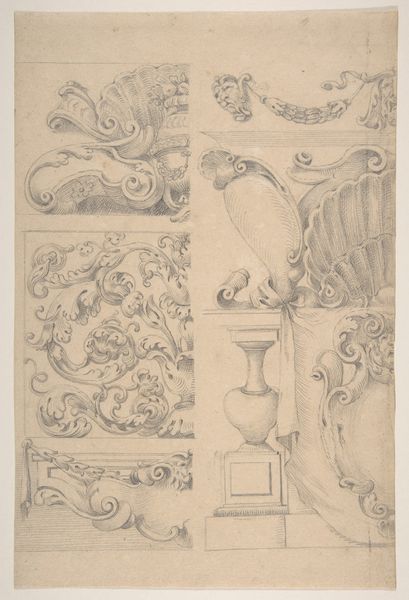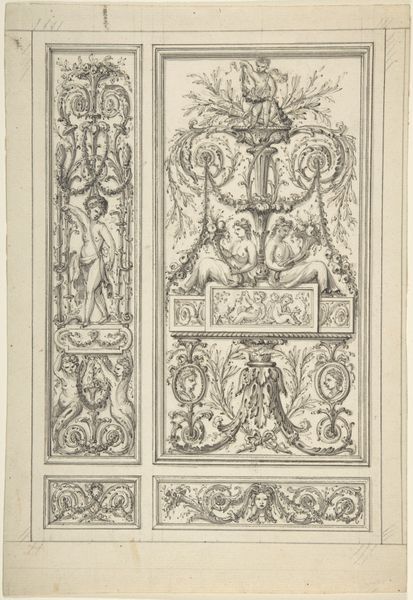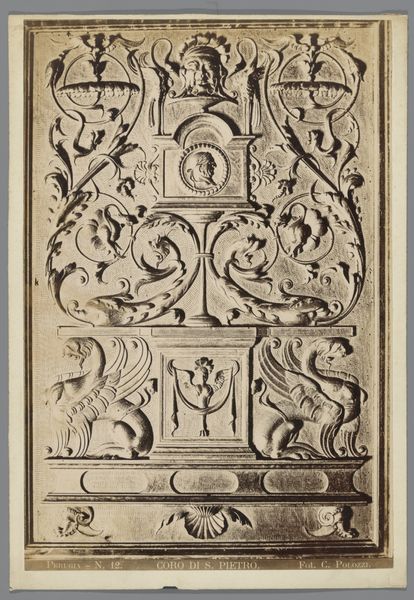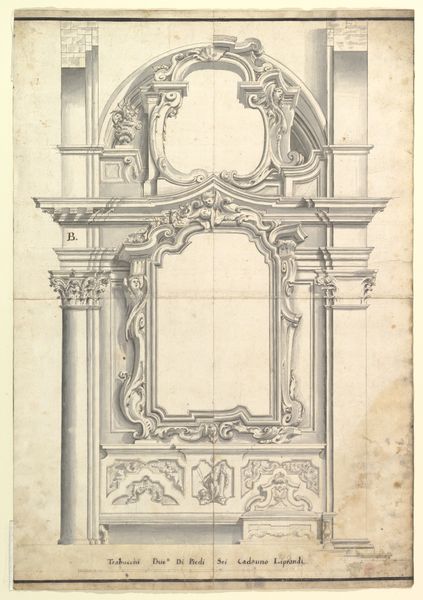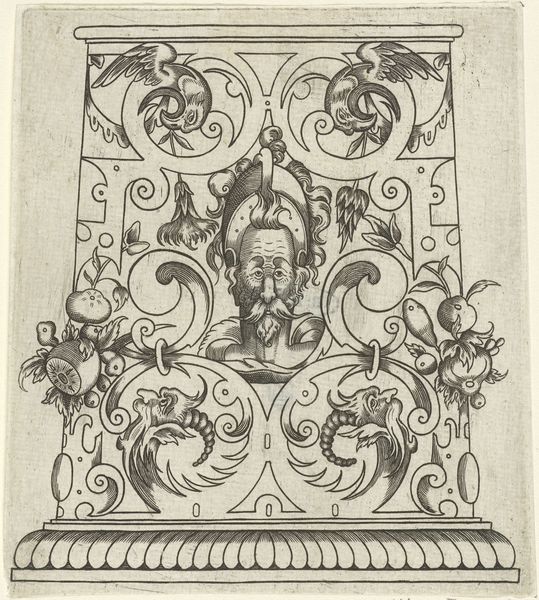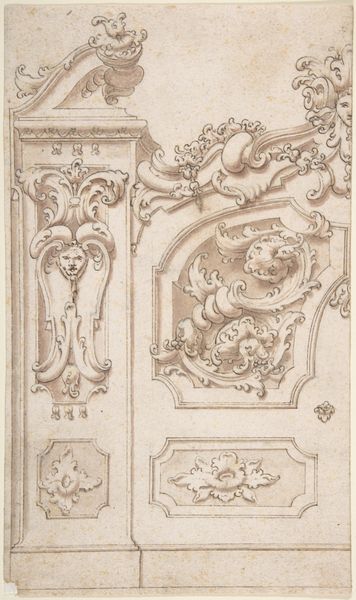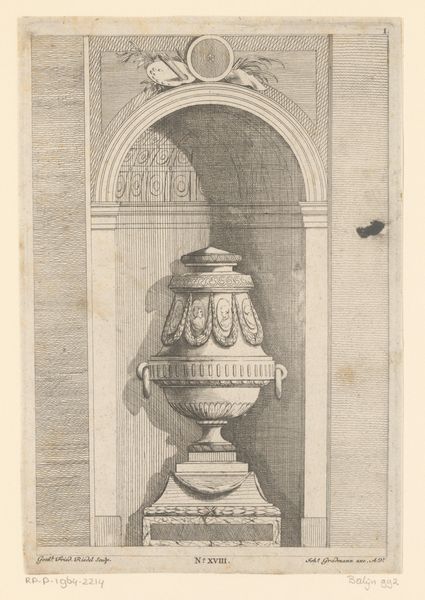
drawing, print, engraving
#
drawing
#
neoclacissism
# print
#
geometric
#
decorative-art
#
engraving
Dimensions: height 486 mm, width 313 mm
Copyright: Rijks Museum: Open Domain
Editor: This engraving, titled "Sierlijst," created by Hubert Roux the Elder between 1831 and 1847, showcases three decorative friezes, very architectural in style. What strikes me most is the incredible detail achieved through the printmaking process. What can you tell me about this work? Curator: Well, looking at it from a materialist perspective, consider the labor involved. An engraving like this demanded meticulous skill and time. It wasn't just about artistic vision, but also about the physical act of cutting those fine lines into the metal plate. These designs would likely have been reproduced at scale, integrated into architectural decoration intended for a wealthy clientele, further alienating those who performed the detailed, skilled labour. Do you see the connection to architectural mass production here? Editor: Yes, definitely. It highlights the distinction between high art and the applied arts. Something like this straddles both worlds - the skill involved elevates it, yet its intended function as ornamentation situates it within decorative art. How does the historical context affect this piece? Curator: In the Neoclassical period, these ornamental prints played a crucial role. Consider their consumption. They served as models for artisans and builders. They facilitated the spread of neoclassical aesthetics throughout society. The question is how widely this print may have actually have influenced design beyond a small elite. How the drawing turns into the reality can be so complex! Editor: So it's less about individual artistic expression, and more about the wider system of production and distribution of design. This system relied heavily on skilled craftspeople. It gives you a new appreciation for their contributions, especially considering the labour that went into mass distribution of those engravings! Curator: Precisely. By examining the materiality and social context, we start to see beyond the aesthetic surface. These “minor” arts and crafts were integral to reinforcing class distinctions in the 19th Century. It also reminds us that even seemingly decorative works had real social and economic impact.
Comments
No comments
Be the first to comment and join the conversation on the ultimate creative platform.

